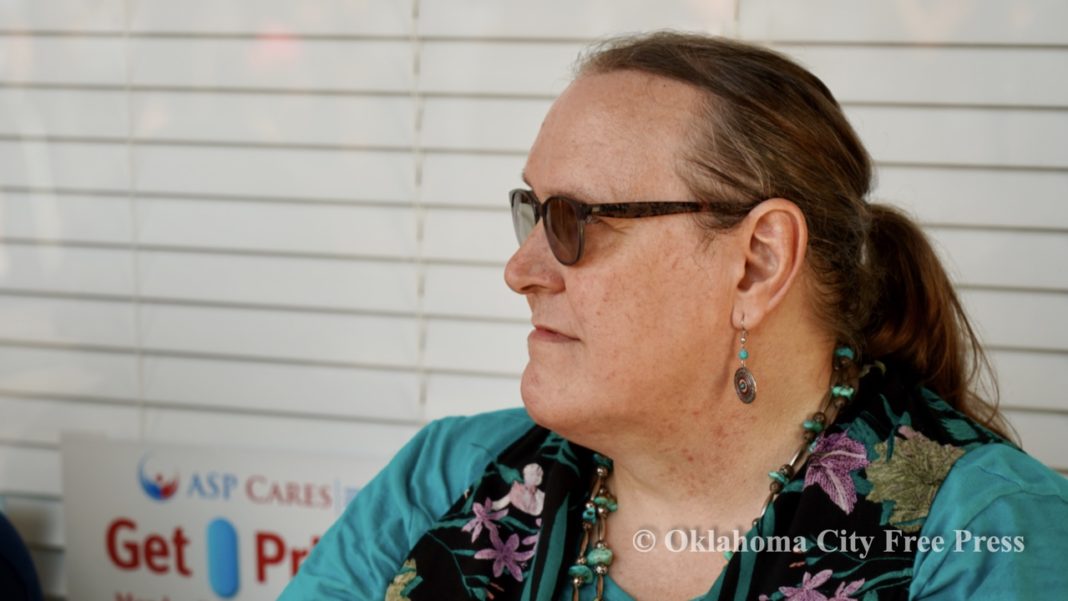Last Updated on January 5, 2024, 12:57 AM | Published: July 17, 2021
Paula Sophia Schonauer, LCSW, continues a serial memoir. If you haven’t read the earlier parts of this series, look at the bottom of this page.
“It may be difficult to assess to what extent, if any, somatic complaints are deliberately fabricated by a child. A more important consideration is what purpose is to be served by such an assessment.”
— Stanley Levenstein, Psychosomatic Illness and Symptoms in Children.
My room at Akron Children’s Hospital was on the 8th floor, the highest up I had ever been, and I enjoyed sitting at the window looking out from my perch: trees, cars, and other buildings miniaturized by height and distance.
It was like being above the world, remote enough to feel safe, close enough to enjoy details. I could see the North Hill Viaduct, a high-level spandrel arch bridge that had spanned the Little Cuyahoga River just north of downtown. There were houses near the bridge, dwarfed by the immense arches over 100 feet high, and there was a green field below the bridge, the riverbank, and trees, some tall enough to reach within a few feet of an arch’s apex.
The world from this perspective seemed idyllic, charming, and nonthreatening. It was enticing to imagine people living ideal lives beneath the arches, protected by those stone sentries, strong and immovable, eternal.

A nurse knocked on the large wooden door framed by metal molding. She walked into the room unbidden but welcome. I liked her uniform, a stiff, white dress, white tights, white sneakers, and a small white cap on top of her head. She wore a blue sweater over her dress, a stethoscope around her neck.
“Time to check your temperature,” she said.
She placed a thermometer under my tongue, causing minor discomfort. While waiting for my temperature, she placed the stethoscope on my chest, gently checking my heart rate, listening to my breathing. The metal at the end of the stethoscope was a little cold, causing me to squirm. She also probed my ears and nose with an otoscope.
“Looks good,” she said. “Are you sure you’re sick?”
I placed a hand on the right side of my abdomen. “It still hurts.”
She lifted my shirt and touched my abdomen gently. At this point, there was a faint, fist-sized bruise to the right of my belly button.
“Hmm…”
The nurse smiled at me, nudged my shoulder as a gesture of assurance.
“What’s for breakfast?”
“Nothing for you,” she said. “You have tests today.”
Later that morning, I sat in an older part of the hospital, the floor white and gray with what appeared to be little boomerangs festooned all over the grey part. The walls were green and shiny, the fluorescent lighting, sterile with no shadows, a slight hum in the background. It was not so comfortable here, less personal, and somehow colder than my room. Some guy dressed in white who insisted he was not a doctor gave me a cup of pink stuff to drink. It looked like a strawberry milkshake, but it was too warm to be ice cream. It tasted like chalk. Yet, I drank it like I was told, one sip at a time, stopping just before I wanted to choke. When finished, the liquid sat heavy in my stomach, rumbling and gurgling.
The x-ray procedure itself was unpleasant. I remember having to lie in different positions while they probed my intestines. I watched a monitor, viewing my insides on a black and white screen. Afterwards, I sat on the toilet for a long time.
For the next couple of days, I endured other tests, none as unpleasant as the first, all the while starving on a liquid diet: beef broth, vegetable broth, skim milk, water, and green Jell-O. Not my favorite. Yet, the attention I received from the nurses and doctors, their friendliness and good cheer was very affirming.
Mom visited during the day, looking sad and worried, frequently placing the back of her hand against my forehead to check my temperature. I was not running a fever, but her concern and the physical contact felt reassuring.
After a couple of days, the bruise on my abdomen was more visible, but I hid it from Mom.
It did become a point of discussion with my nurse and a doctor, and they sent in a woman older than Mom and dressed in professional attire, a skirt and blazer. She was pretty and nice, asking me about the bruise. I told her I got beat up a lot.
“Does it hurt?”
I placed my hand on the bruise, ashamed of it, tears welling in my eyes.
She left the room.
I held my stomach, bent forward, and cried, really cried, big heaving sobs. I let it wring out of me like a twisted dish cloth, then I unraveled and collapsed on the bed.
Despite the noise and constant light, the periodic wakeups to check vitals, I slept well. I felt safe for the first time in a long time, no shadows moving outside my door, no arguing voices reverberating through the house, no carpet staples to cut my feet. Nobody ignored me. Nobody beat me. Nobody made fun of me. People listened to me. I did not want to go home.
The next morning, I stared at my bruise, pressed it hard with my fingers, wanting it to hurt, wanting to cry, and I did.
They were not fake tears, not tears of pain, but tears of sadness, despair. It seemed my time there was coming to an end.
The nurse came into my room, a concerned look on her face. She checked my forehead for fever, got tissues to wipe my eyes, and hugged me. During her visit, an orderly brought a tray of food, and when she removed the cover, I saw a plate of pancakes, another plate of scrambled eggs shaped into a square, two slices of bacon, milk, and juice, and a small box of Apple Jacks, my favorite cereal. I ate every bite.
- Manhood, from the inside out — Memoir and Mythology
- Part 2 — Cubby Hole
- Part 3 — Magic Carpet Cocoons
- Part 4 — Snips and Snails and Puppy-Dogs’ Tails
- Part 5 — Mirror
- Part 6 – Deep Water
- Part 7 – Limbo
- Part 8 – Dissociation
- Part 9 – Shame
- Part 10 – Judgement Day
- Part 11 – Inferno
- Part 12 – Haunted
- Part 13 – Did I say that?
- Part 14 – The end times
- Part 15 – Alone again (naturally)
- Part 16 – Welcome to Grey Town
- Part 17 — Stigma
- Part 18 — Turning the other cheek
Guest Columnist Paula Sophia is a licensed clinical social worker in Oklahoma City and a former Oklahoma City Police Officer.







